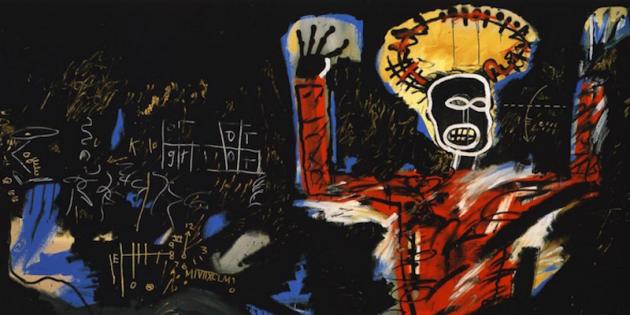Last week we had Saatchi falsely bending to women artists, this week with the Oscars furore we look at another overlooked section of the population: it seems it takes a worthy film about slavery with plenty of ‘Issues’ being addressed in order to merit black artists (Steve McQueen in 2013), rather than, y’know, actually rewarding them for the bread and butter type roles white people routinely are recognized for. Soft roll, anyone? Given astoundingly white nominations for a second year in a row, the recognition enjoyed by 12 Years a Slave horribly feels like a concession now.
But what of the art world? It somehow feels an unfair comparison as we have no equivalent to the Oscars: no, the Turner Prize doesn’t count anymore. Perhaps the following is a better comparison: Damien Hirst and Tracey Emin may be making the loud, brash commercial artwork commanding big bucks, just like a noisy and empty Michael Bay movie. There’s a formula and nothing particularly original. But where art differs from film is that there is less emphasis on box office return: outside the film industry model in which movies are so difficult to fund, artists have greater freedom (hopefully for some time yet) to explore more profound causes, with less need to sell millions of editions. Recognition isn’t found in prizes or publicity, but in the art world’s general greater openness to other culture. After all, isn’t art about exploring the new or different? Thus we see Yinka Shonibare displaying his ship in a bottle using traditional African prints on Trafalgar Square; we have El Anatsui displaying his monumental bottle top cascade on the Royal Academy.
Having said that, after these examples I struggle to come up with names beyond Steve McQueen, Chris Ofili and obviously Basquiat (decades ago!). It can’t simply be that there are so few great black artists, moreover perhaps institutional racism is more deep rooted than I thought within our arts culture. A century ago Malevich painted his Black Square, supposedly covering a racist joke beneath about “Negros fighting in the Dark”. And only recently is the Rijksmuseum in Amsterdam removing the bigotry from its works’ titles (more on that another time..). When you then consider the forays made into feminist art following the struggles of the early Twentieth Century, there is arguably much less evidence for the promotion of black artists. Now that’s frightening. See Artlyst’s Top 10 International Black Artists Here

